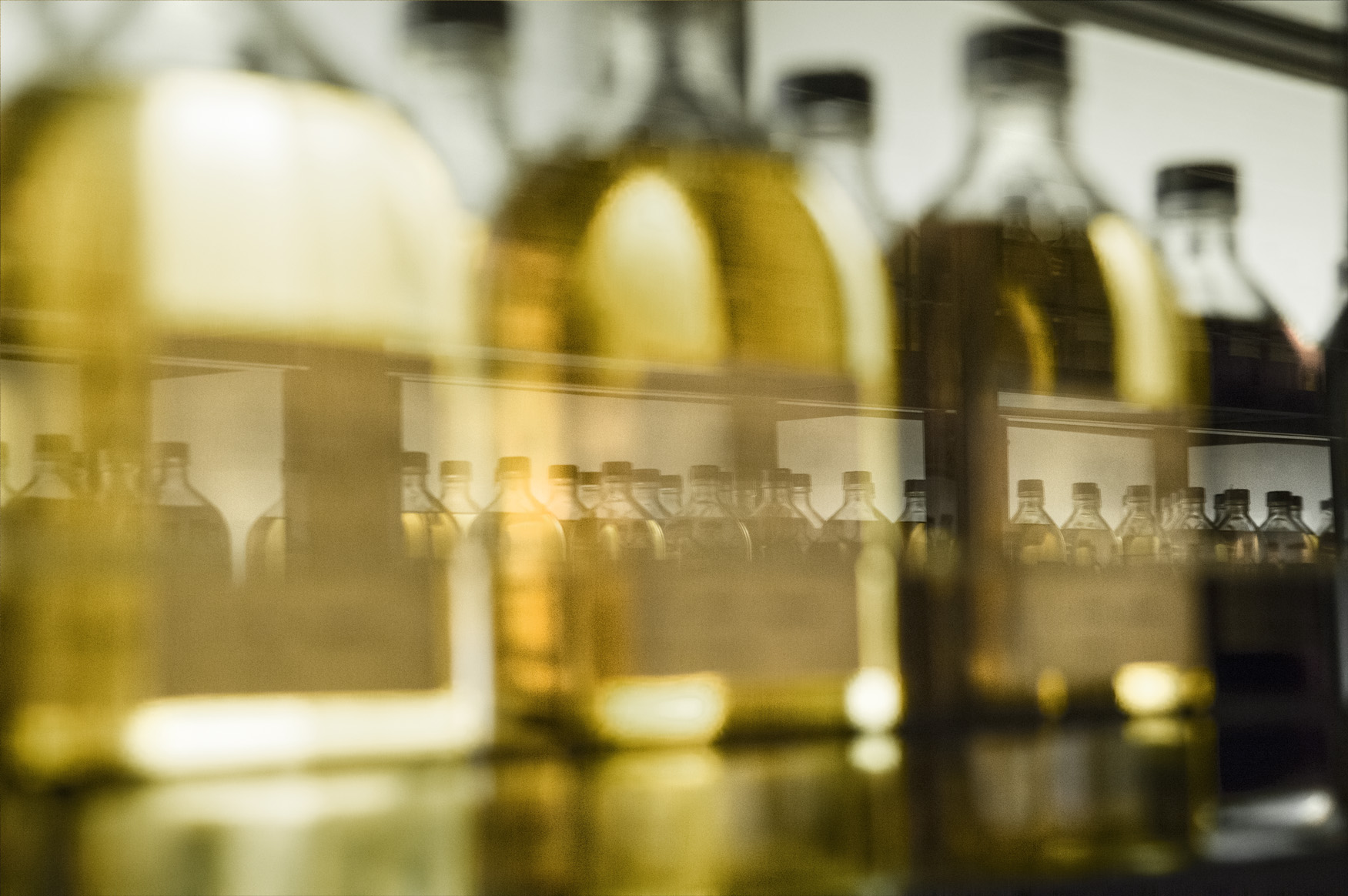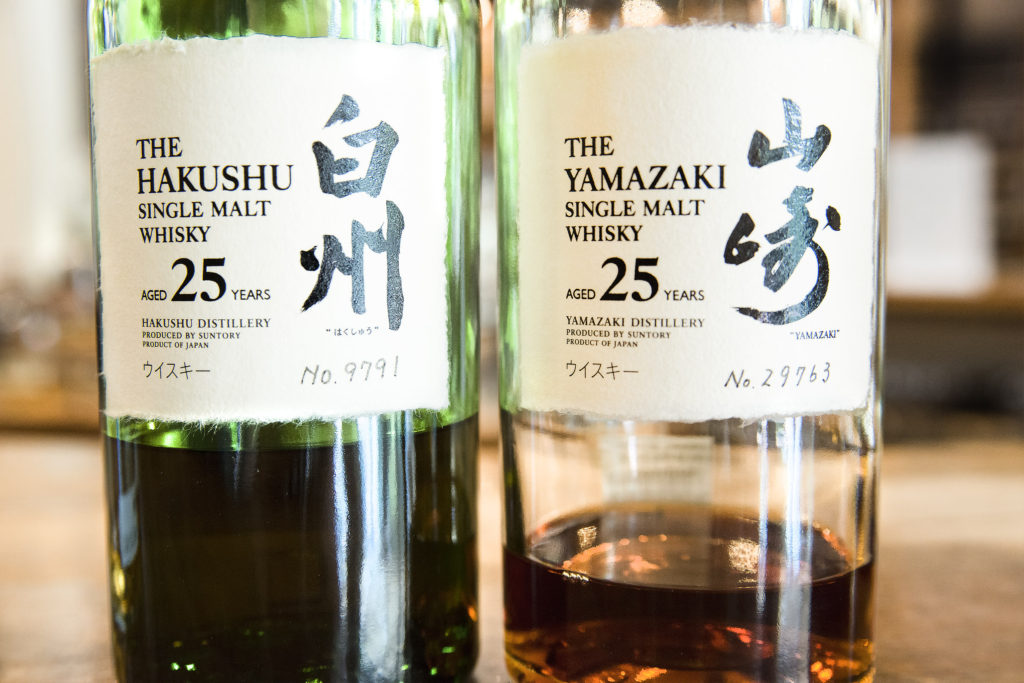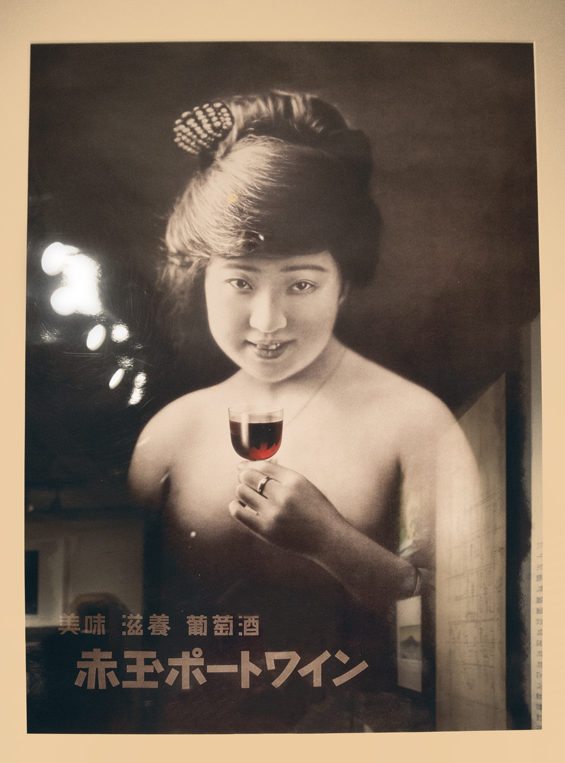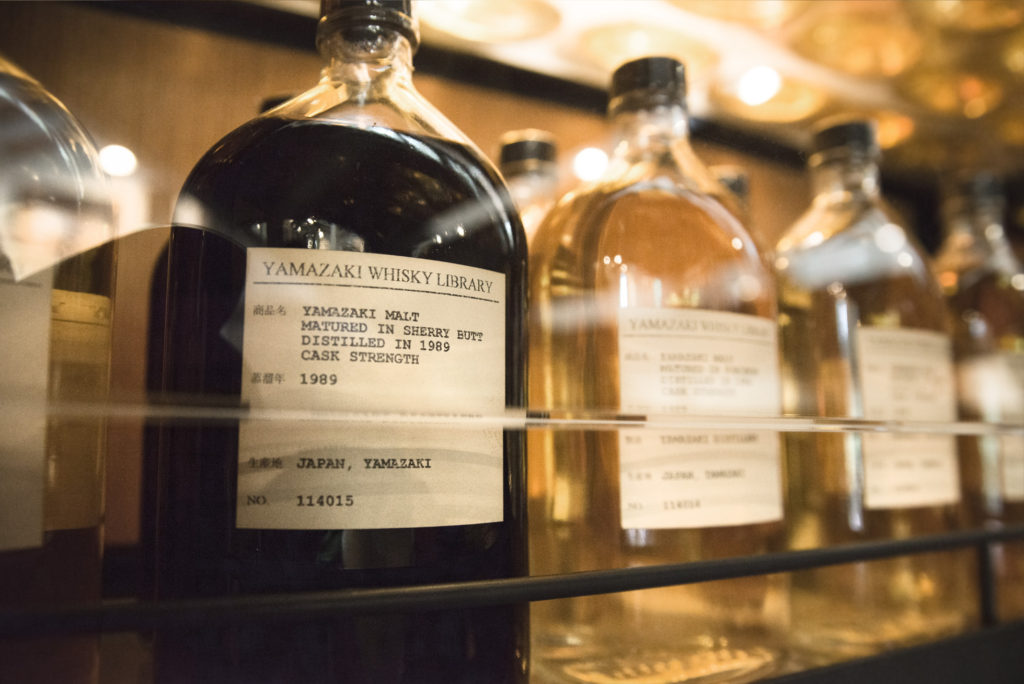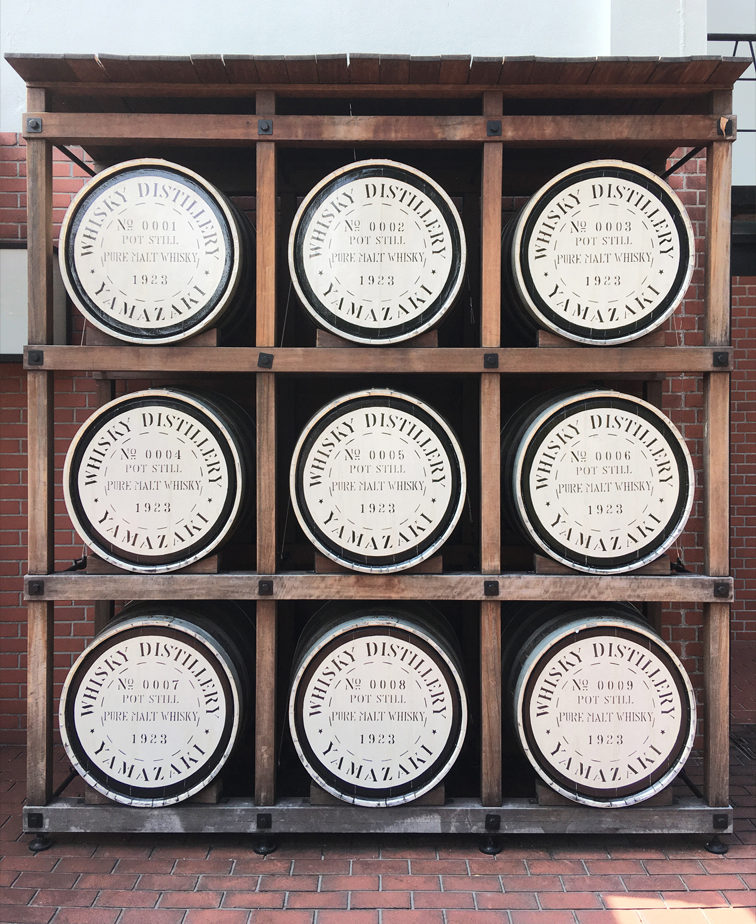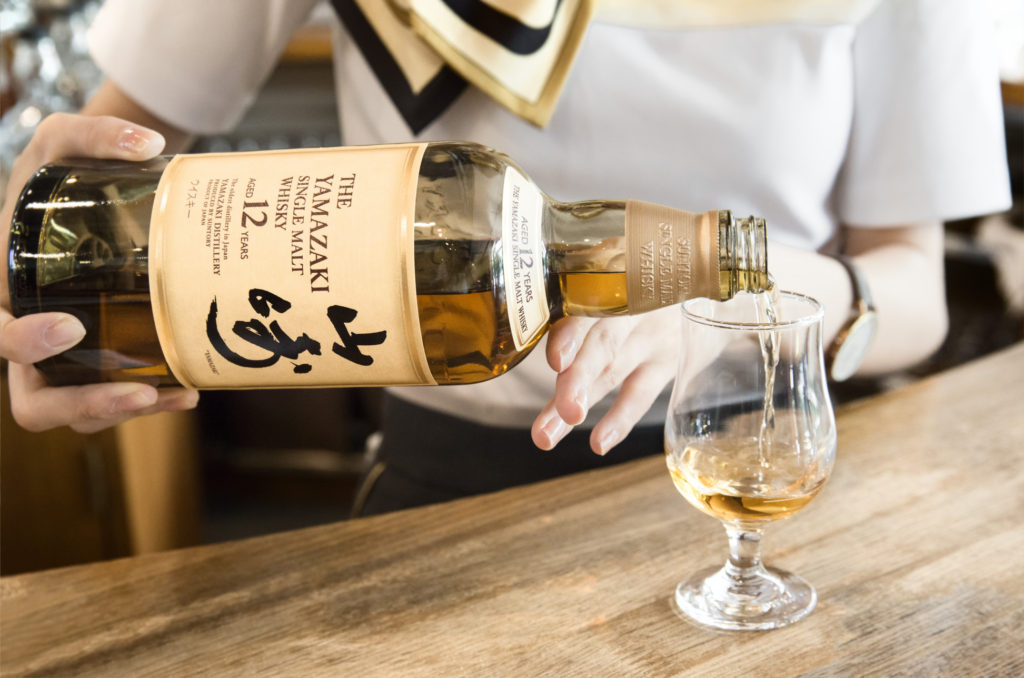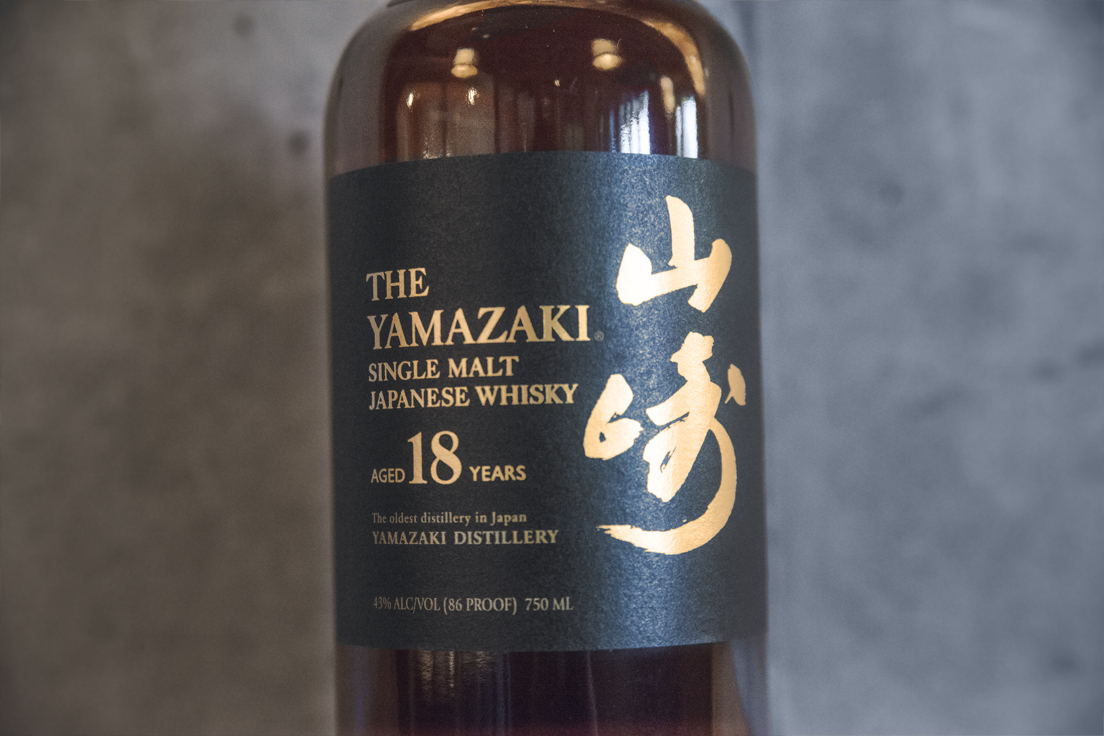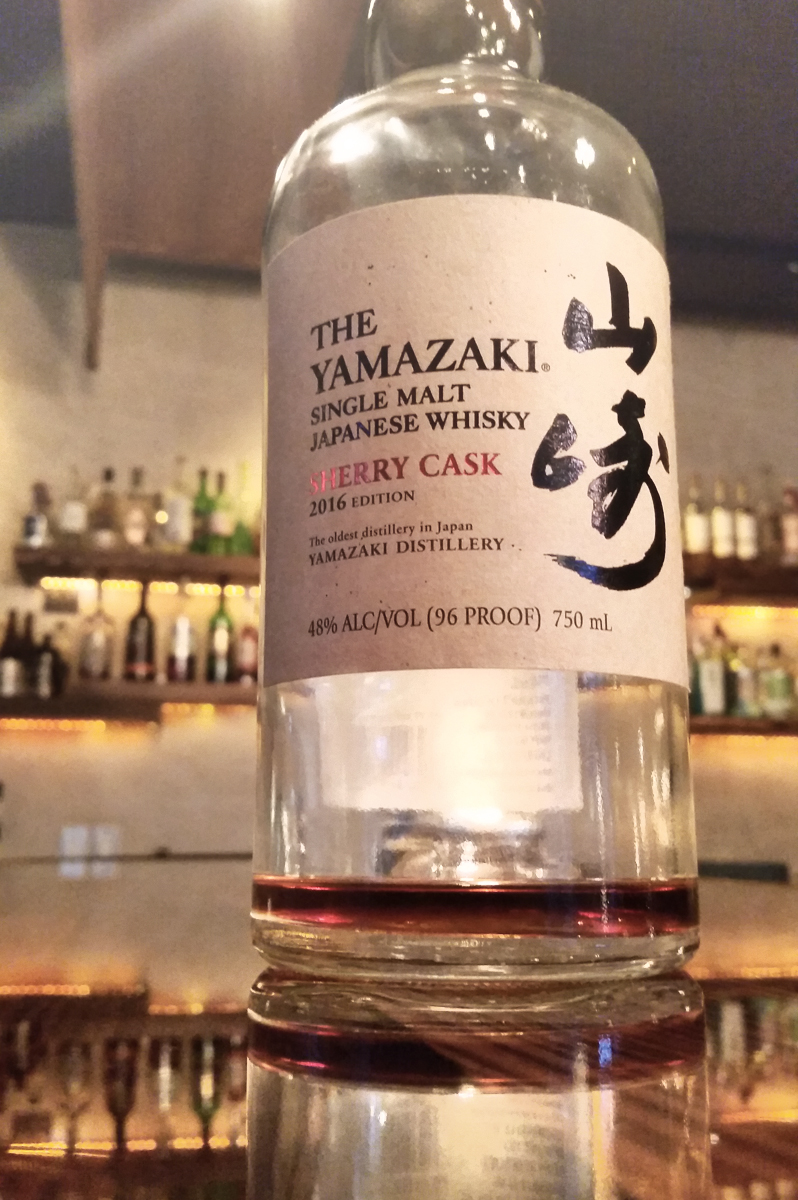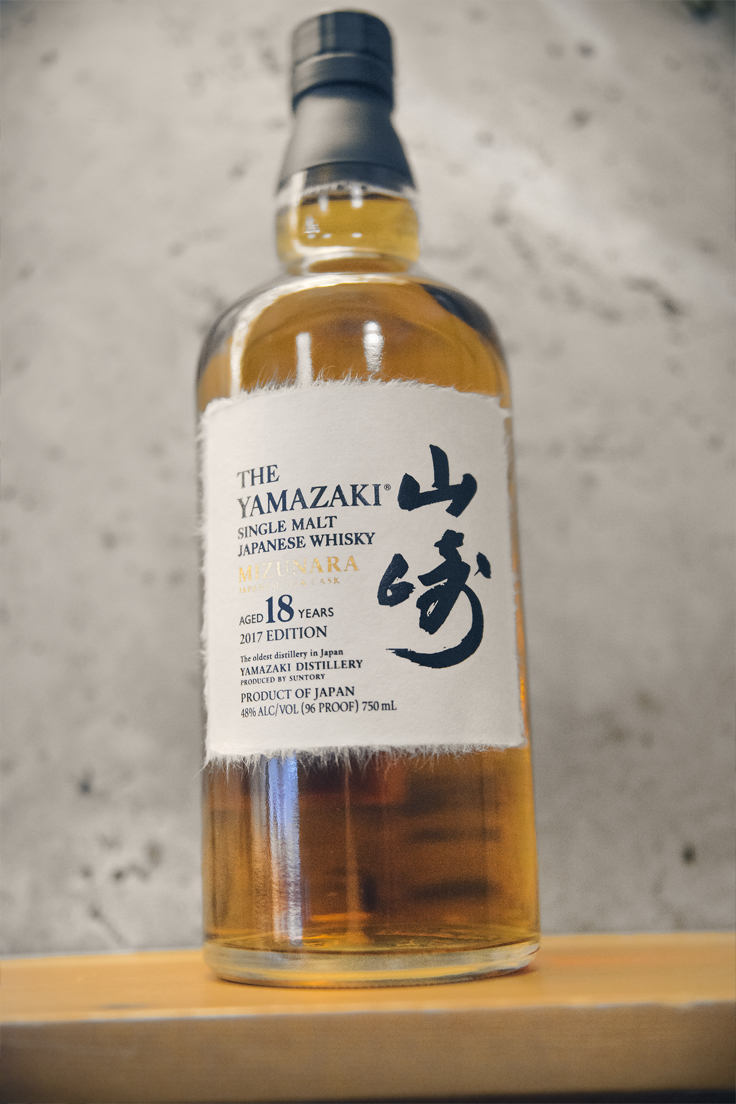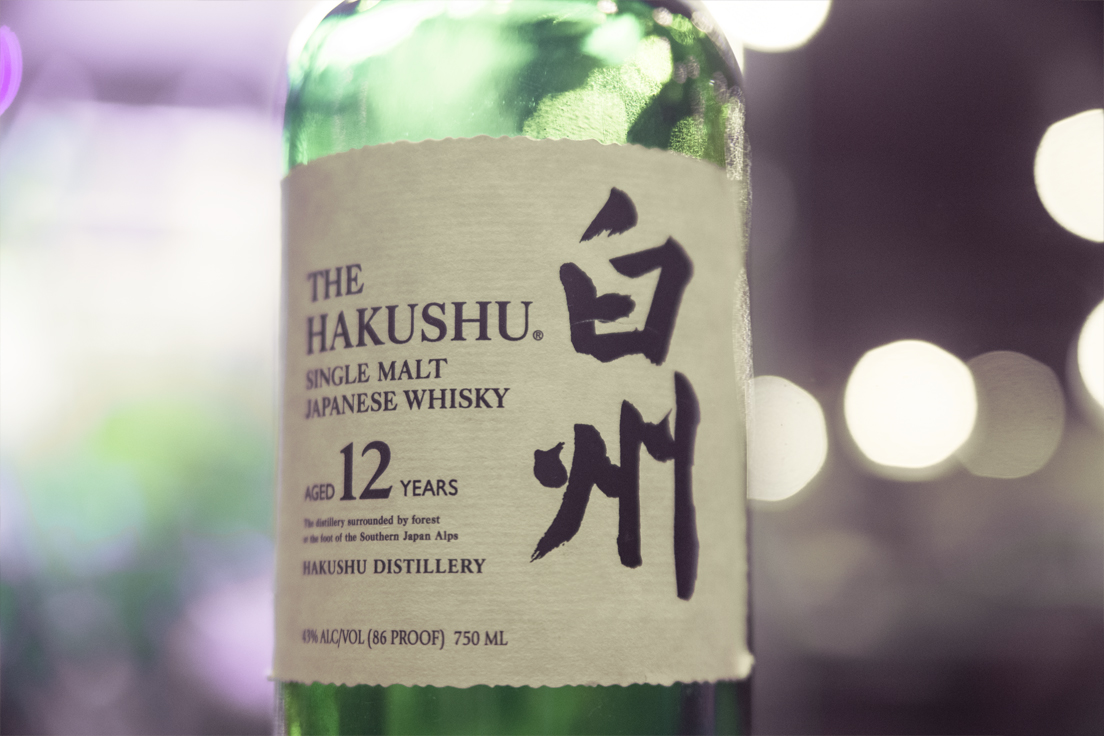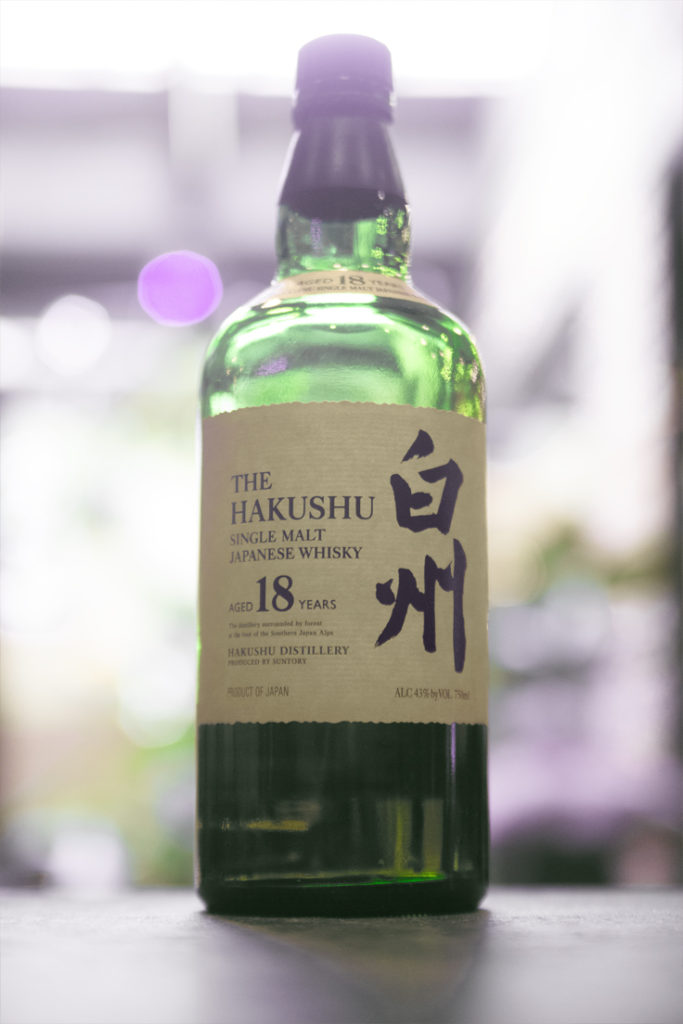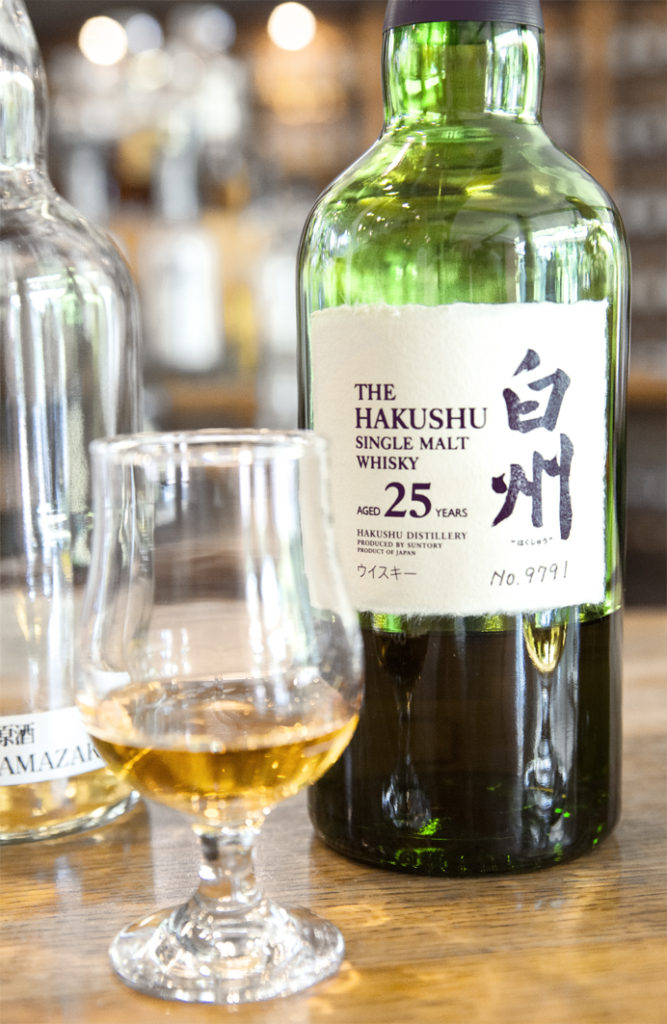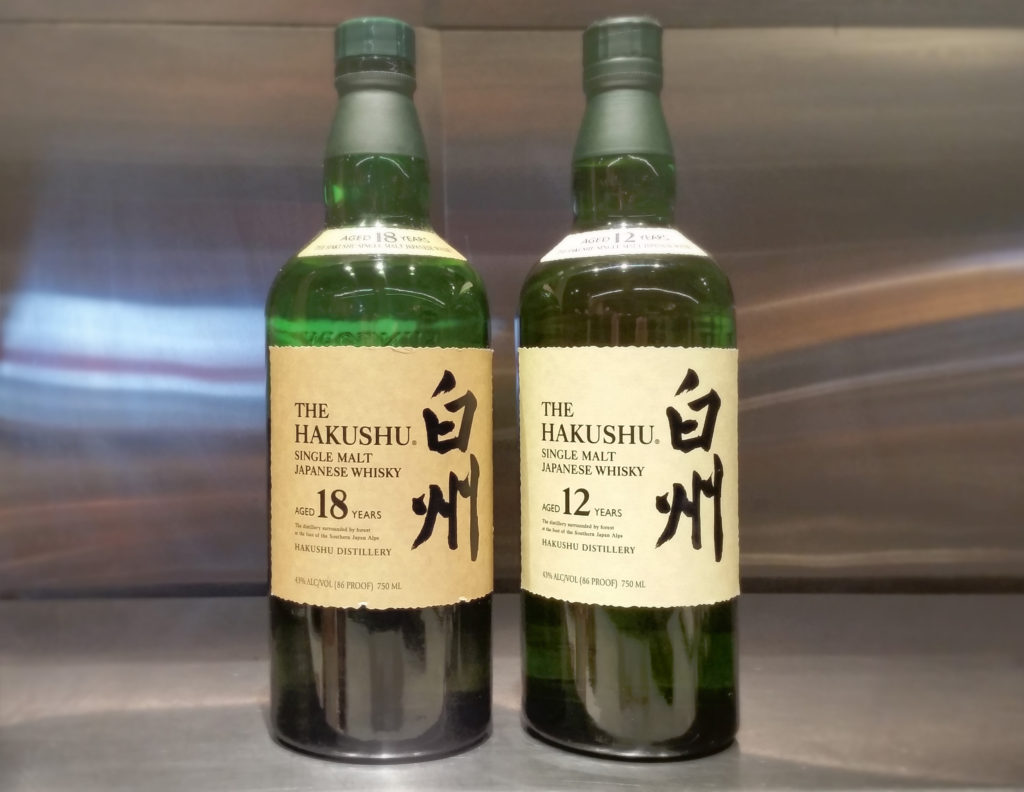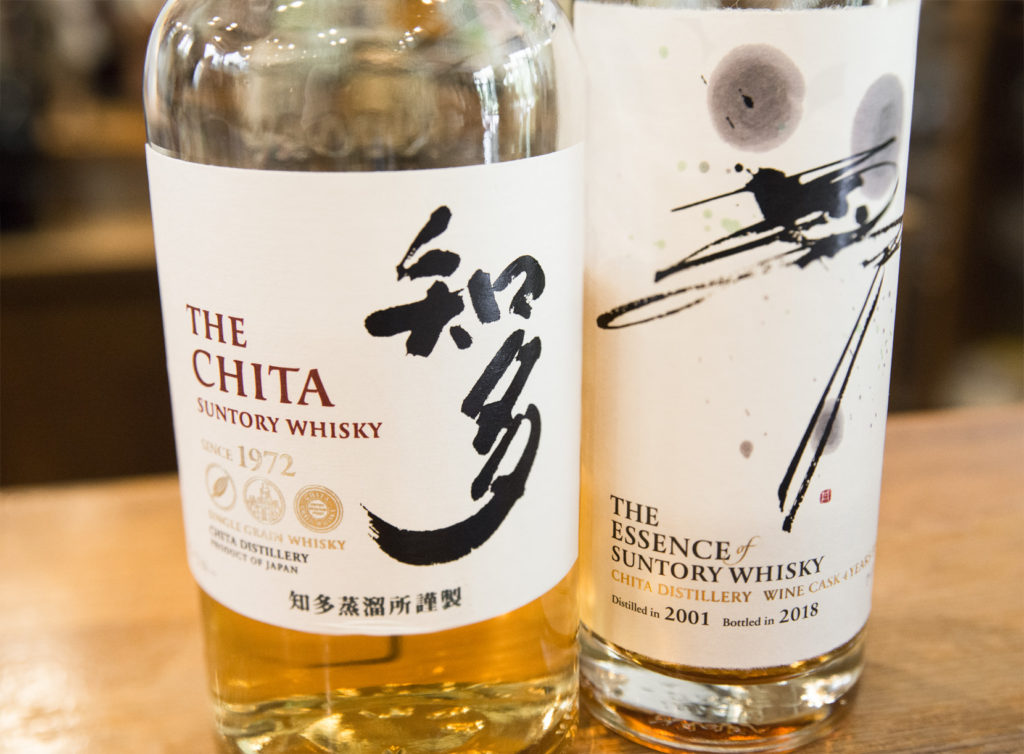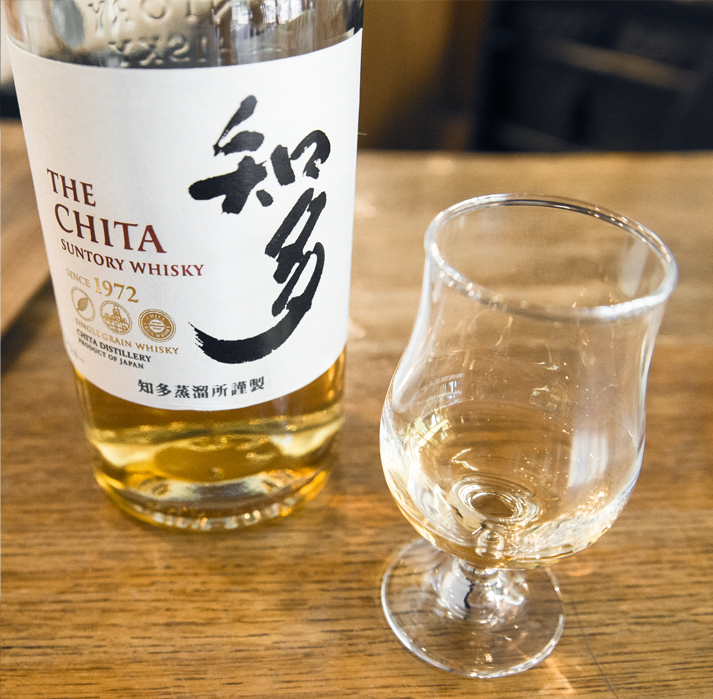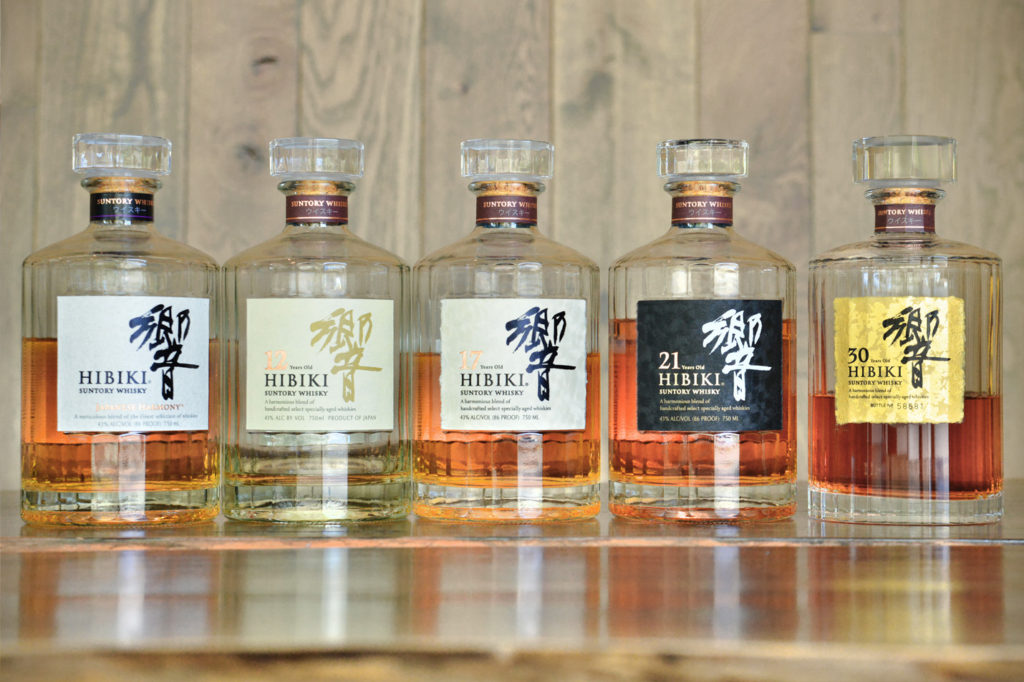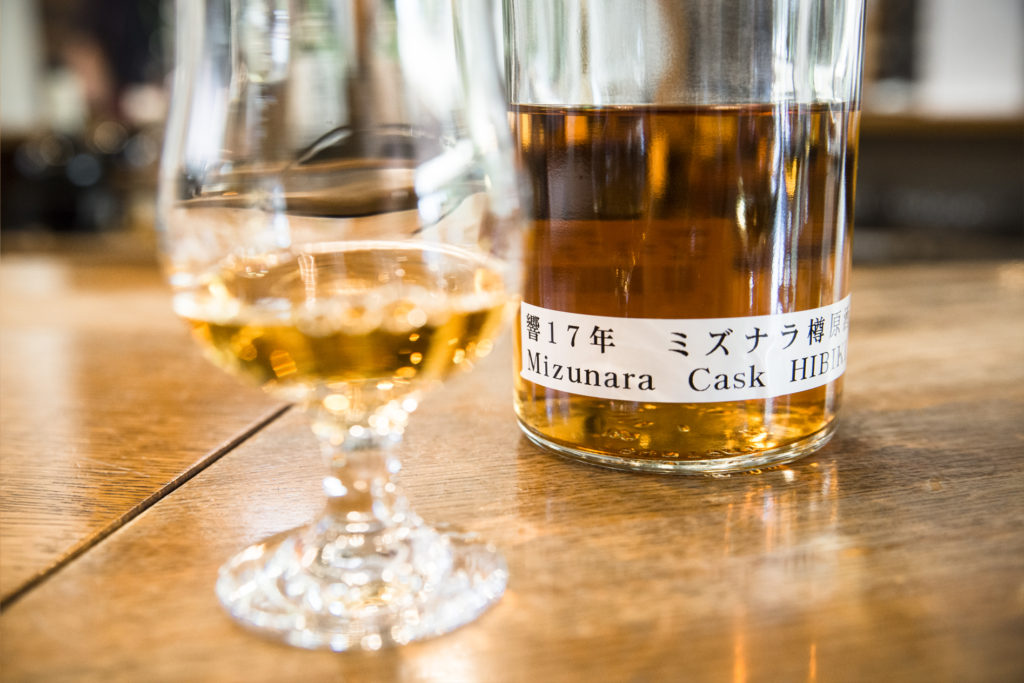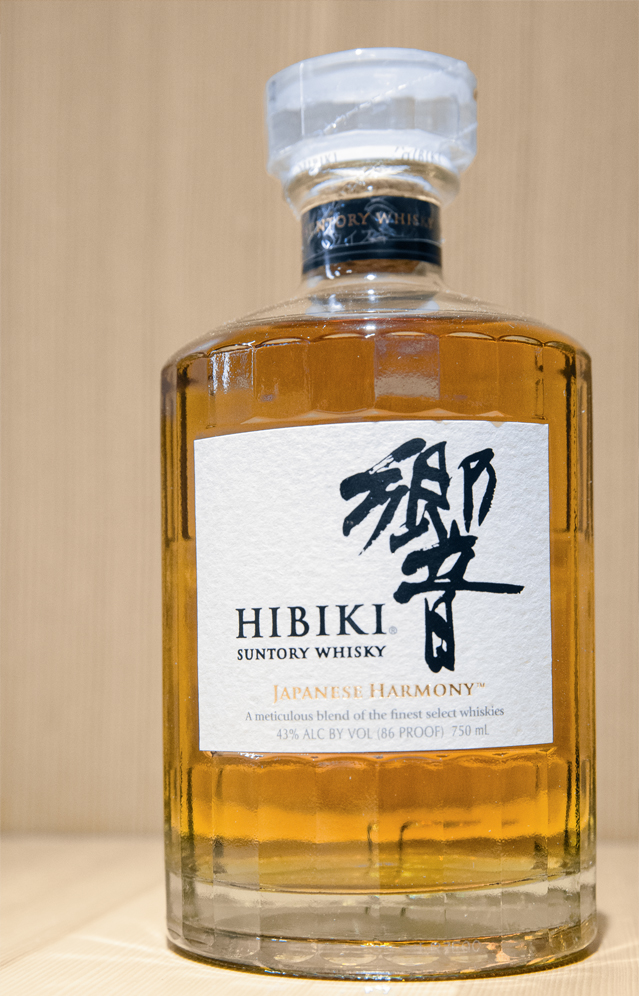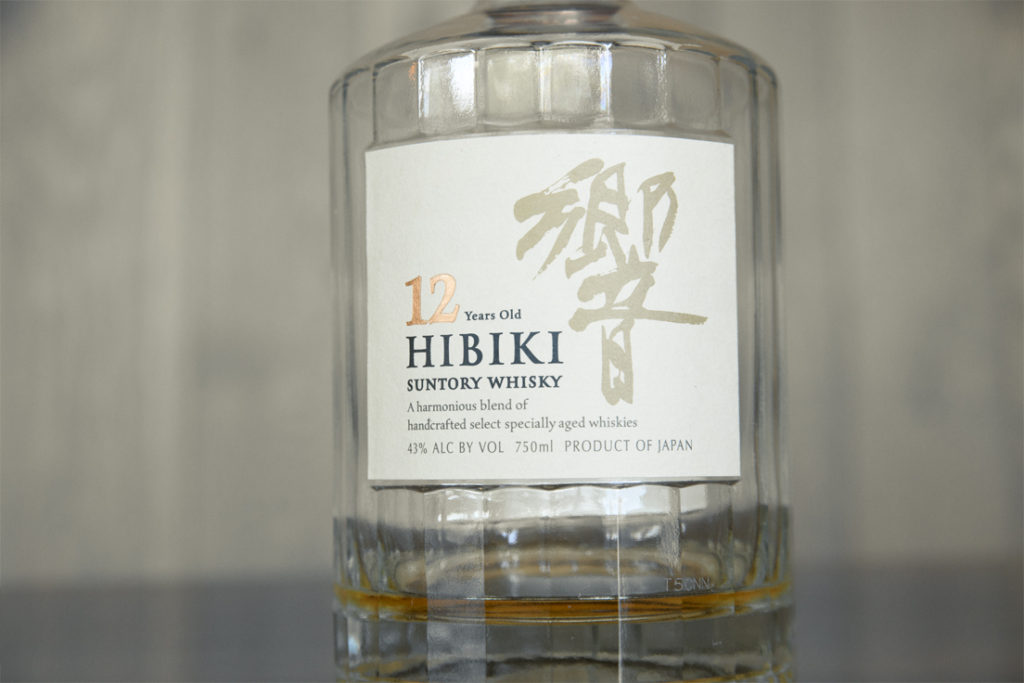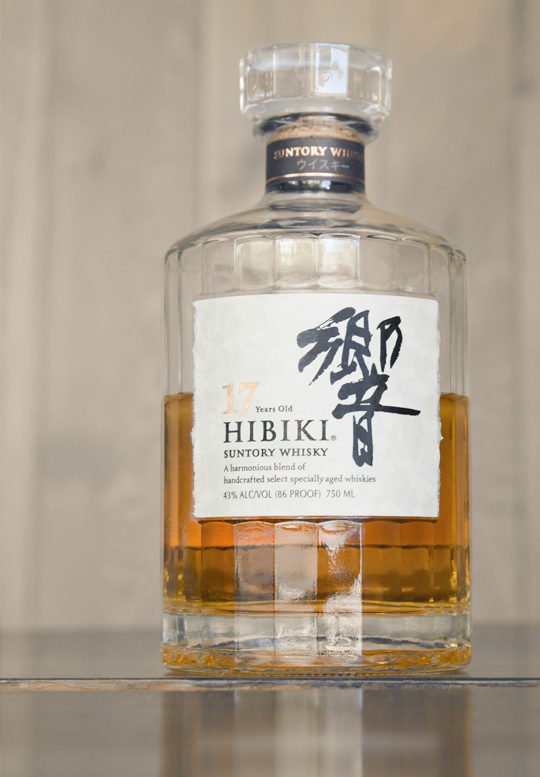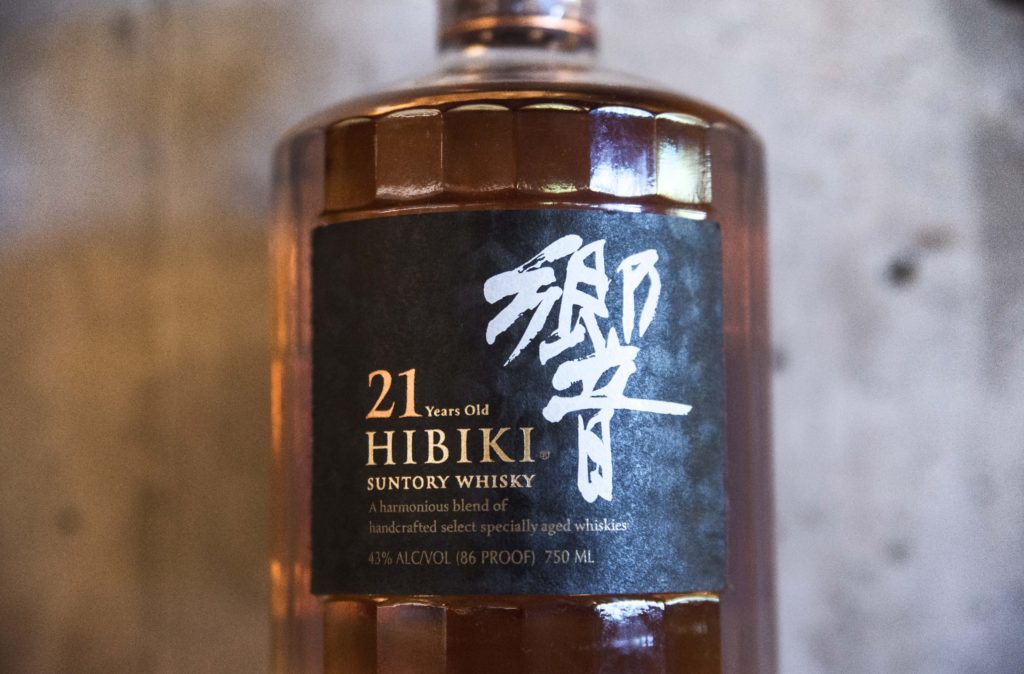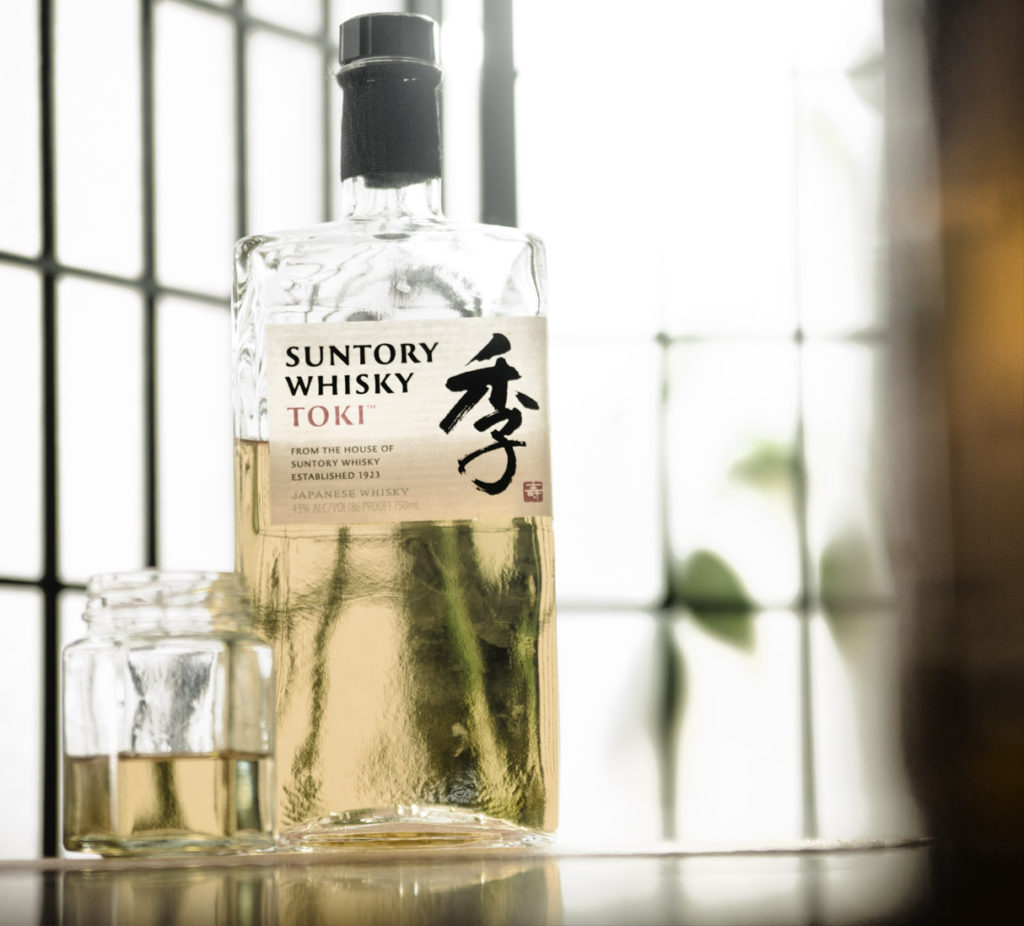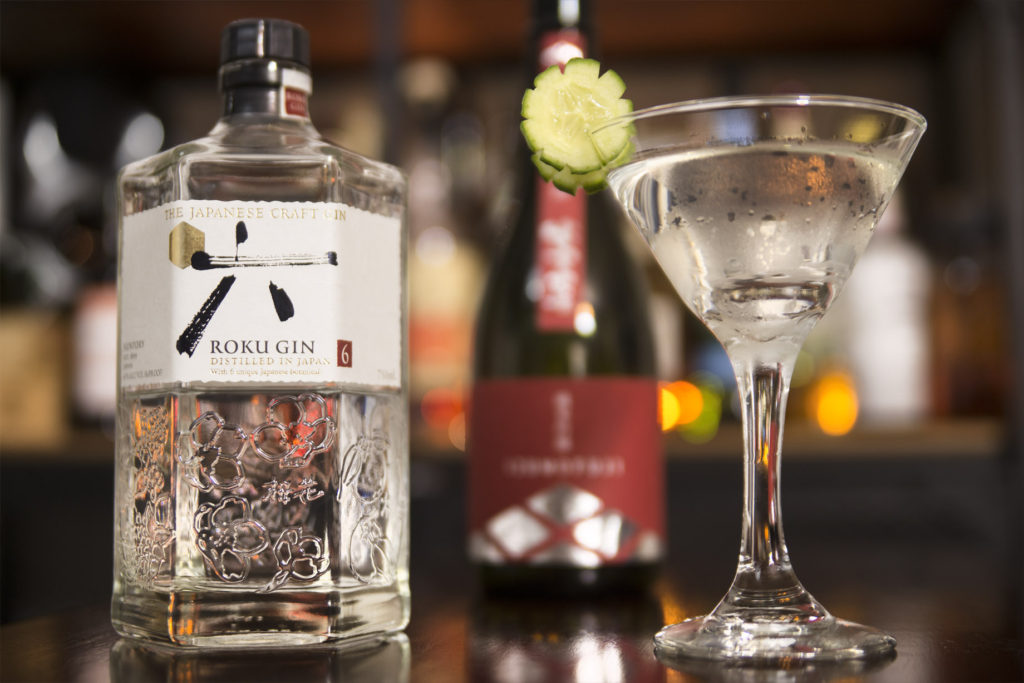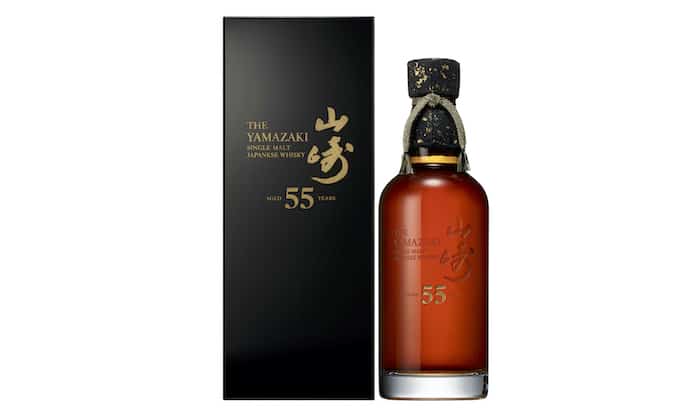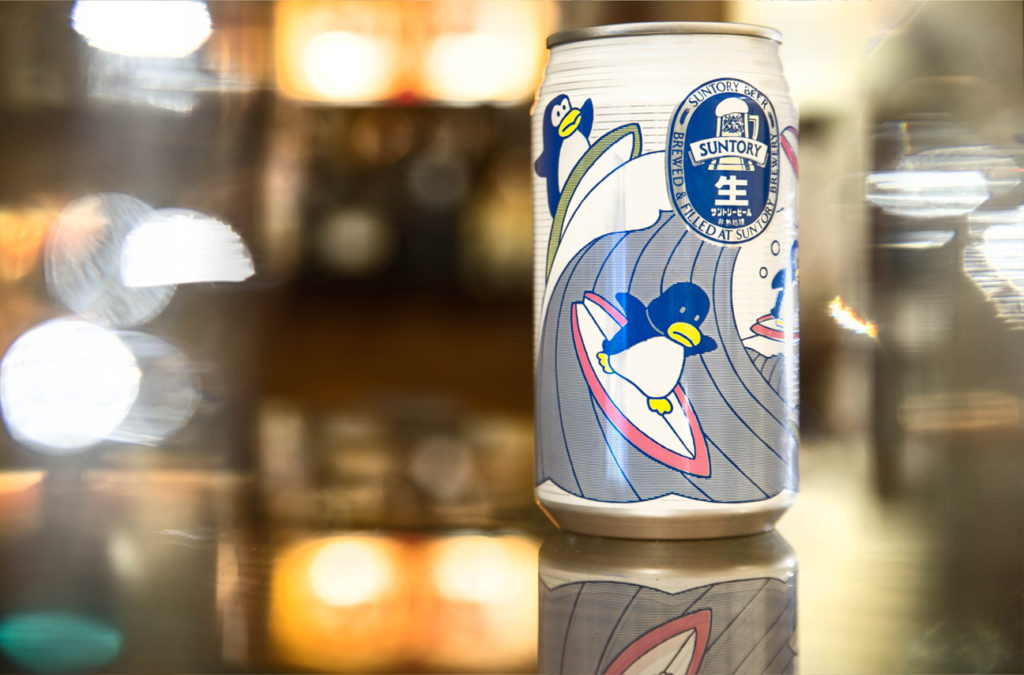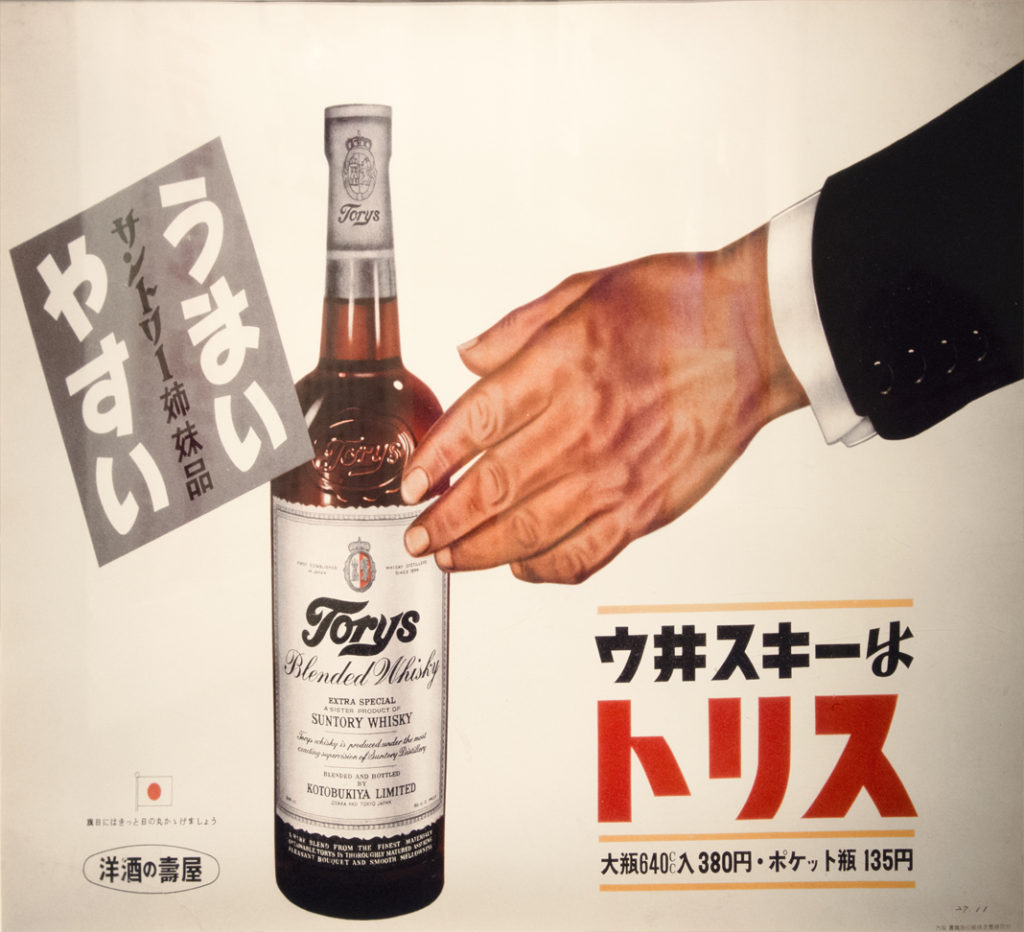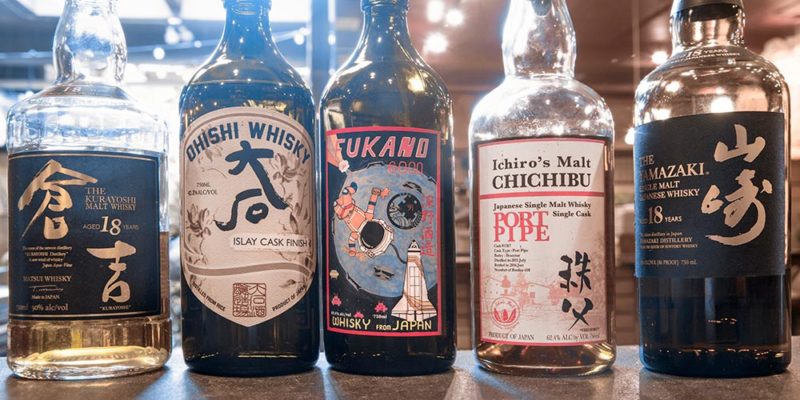Last Updated: 10/31/2020
Suntory is synonymous with whisky. Within its umbrella are some of the most prestigious brands in the whisky world: Yamazaki, Hibiki, and Hakushu. And they don’t just make whisky. Today they (Beam Suntory) are the third biggest spirits producer in the world. From adoring fans and global placement to Bill Murray and a penguin with PTSD– Suntory’s rise to the top has been wet, weird, and entertaining. The story of Suntory whisky is directly tied to the birth and rise of Japanese whisky. Devotees to the category will at some point need to take the plunge. This page will cover the history of Suntory, it’s distilleries and its products.
The Early Days of Suntory
Founded in 1899 by Shinjiro Torii (鳥井 信治郎), Suntory started out simply as a wine shop. Back then the company was called Kotobukiya. Not long after, the company released Akadama 赤玉. This sweet red wine was modeled after the famous and fortified Port. It was a big success and is still produced today. But it wasn’t until the groundbreaking creation of the Yamazaki Distillery that Suntory really took off.
Yamazaki 山崎 – Malt Whisky from Osaka
Suntory’s Yamazaki Distillery (Yamazaki Jōryūjo 山崎蒸溜所) was Japan’s first operating whisky distillery, still its most famous, and probably the most sought after of the Japanese whisky category. In 1924, Shinjiro Torii hired eventual Nikka founder Masataka Taketsuru, the “Father of Japanese Whisky”, to set up the distillery and to produce the early Yamazaki/Suntory bottlings. This savvy move would change the whisky world.
Yamazaki (山崎) is Japan’s most storied distillery and the most famous Japanese whisky brand. Typically only single malts and malt whisky for Suntory’s blends are produced here. Yamazaki whiskies tend towards faintly sweet, fruity, floral, and soft profiles. Peat, smoke, and heather qualities are subdued in almost all bottlings. The distillery has 6 pairs of copper wash and spirit stills (pot stills) of various sizes and shapes. This leads to a range of profiles for their new make. Direct fire is often used in the first run as well. This adds a bit of body and a roasted character. The second run distillation run uses indirect steam.
Yamazaki’s monster success can be attributed to this wonderful variety of distillates, plus their use of diverse barrels and expert blending. Noteworthy is Yamazaki’s use of Mizunara Japanese oak for some of their aging regimen. This rare type of white oak is said to produce whisky with notes of sandalwood, kyara (an aloe-like incense), honey, and coconut.
To finish things off: Yamazaki uses very soft water. And being a top 100 water– Rikyu no Mizu 離宮の水 carries quite a pedigree. In addition, the humid and warm local climate help create their own unique style.
One of the coolest things about Yamazaki is its location. The distillery is adjacent to the major cities of Osaka and Kyoto with easy access by rail. The distillery tour is famously limited, but their whisky museum, library, and tasting room are not. Reservations are required. A large variety of Suntory whiskies are available for sampling, including many exclusive bottlings and cask samples. Prices are low and the service is impeccable. It’s a must-stop if you’re in the Kansai region. They’re closed due to Covid, but they’ll eventually re-open.
The Yamazaki 12 Year Aged Single Malt
In 2003, Yamazaki 12 Year Single Malt won a gold medal at the International Spirits Challenge. It’s popularity and prestige has continued to grow. The fruity, off-dry, and creamy nature of the NAS is present and with the addition of roasted umami. Notes include apricot, lychee, strawberry, lime zest, golden apple, raisin, fresh flowers, honey, allspice, and vanilla. There is a hint of herbal peat in Yamazaki 12– but no smoke.
Demand for Yamazaki 12 Year Single Malt is high, but it can be found. Prices in the States range from about $120 to $150. Like most popular Japanese whiskies: you’ll want to watch out for price gouging.
The Yamazaki 18 Year Aged Single Malt
Yamazaki 18 is one of the great Japanese whiskies. Like it’s two younger siblings: this single malt has an off-dry and silky-smooth profile. Color is noticeably darker with a reddish hue that hints at some Sherry cask influence. Notes include raisin, bruised yellow apple, mandarin zest, apricot, honeysuckle, sandalwood, ginger, cinnamon, and light toast. There are hints of smoke on the nose, but nothing compared to the malt whiskies from Yamazaki’s sibling Hakushu. Overall, Yamazaki 18 is an outstanding whisky and deserving of its elite reputation.
There is a downside to being a member of Japanese whisky royalty: price. Stocks are very low. Meanwhile, the demand for a whisky of this pedigree is huge. Whisky collectors often pay exorbitant prices for any Yamazaki 18 that becomes available. Retailers have learned that almost no markup is too high in this environment. Not that long ago, one could find Yamazaki 18 for less than $300 retail. Even today, it typically wholesales for less than that. But look around on Wine-searcher and you’ll see what I mean about markups. This holds true for most collectable Japanese whiskies though, so Yamazaki 18 is not unique in this regard.
And all that griping doesn’t mean you shouldn’t try this elite whisky turned status symbol. Inside the glass– Yamazaki 18 is legit. If you’re not a member of the Whisky Wall Instagram Society and want to try a dram, I recommend looking around at izakayas and bars. Some will offer pours at a fair rate. I’ve found that non-Japanese bars with good spirits selections can often have very good pricing.
The Yamazaki 25 Year Aged Single Malt
Yamazaki 25 Year is a deep bronze whisky with an amber hue. It’s aromatic, super soft, and dryer than the above Yamazaki whiskies. Tasting notes include ripe peaches, raisin, mandarin oil, dried cherry and raspberry, rose petal, almond, sencha, leather, savory malt, brioche, aloe, vanilla, and cinnamon. Light flor and oxidative apple and peach flavors also mix with a faint smoky peat influence.
Yamazaki 25 is easily one of the most expensive Japanese whiskies being produced. Expect to pay $7000-$8000+ US for a bottle retail, or around $100-$150 per 0.5 ounce pour. It certainly qualifies as a collector or investor whisky if you can find a bottle for the right price. The Yamazaki Distillery is an excellent place to sample this iconic Japanese whisky and it won’t break the bank.
The Yamazaki Single Malt, NAS
Yamazaki’s entry level single malt whisky. The nose is unmistakably fruity, with notes of red fruit, blueberry, peach skin, and citrus. Viognier-like notes are present as well, along with a mix of sandalwood, coconut, honey, and a light brine. The fruit carries on to the palate giving a semi-sweet impression. A mild soapy quality is present, but not unpleasant. No peat or smoke. The texture is supple and pleasant.
Yamazaki Single Malt Whisky NAS is a relatively recent release based out of necessity. Stocks of aged malts have famously dwindled under intense global demand. This whisky is not widely distributed yet, but that should change. Price is around $70-$100.
Yamazaki Sherry Cask Whiskies
Yamazaki is well-known for its use of Sherry casks in the whisky aging regimen. For long, this was just an element of complexity in their famous malt blends. In 2015, Jim Murray’s Whisky Bible awarded the Yamazaki Sherry Cask 2013 as Whisky of the Year. Mark it as one of the origins of the Japanese whisky craze. A 2016 Yamazaki Sherry Cask release followed. If you can find either of these whiskies– expect to pay at least $5000 US retail.
Yamazaki Mizunara 18 Year Aged Single Malt
A baller Japanese whisky– this Yamazaki single malt is aged in Japanese mizunara white oak casks. Suntory is famous for its use of mizunara and this whisky represents one of the crown jewels of the preciously rare oak. The most recent Yamazaki Mizunara release was in 2017. It’s still kicking around many high-end izakayas and Japanese restaurants. Retail prices start around $5K US, although it wholesaled for only about a thousand dollars– another example of the market gone mad. Either way– if you can get your hands on a reasonably priced bottle or dram then go for it!
“The Essence of Suntory” Yamazaki Whiskies
There have been four volumes of the limited “Essence of Suntory series as of 2020. They’ve mostly been made available to restaurants and bars, so getting your hands on one for your home bar may be tricky. One of three original Essence of Suntory bottles released showcased a Yamazaki with peated malt. It was bottled at cask strength after 12 years of aging. Volume 2 featured three Yamazaki malts– all with different Sherry cask influences. There were also bottled at cask strength and with age statements of 9 or 10 years. Volume 3 is dubbed “Cedar Showdown”. One of the two whiskies, “Rich Type”, is a Yamazaki NAS malt and grain whisky using cedar head casks. A pretty cool way to bring some taru character into the whisky! The most recent 2020 Essence of Suntory releases did not use Yamazaki.
Hakushu 白州 – Malt Whisky from Yamanashi
The Hakushu Distillery is located on the high altitude slopes of Mount Kaikomaga-take 甲斐駒ヶ岳 in Yamanashi prefecture. The soft sub-surface water, lower atmospheric pressure, and cool climate result in a different style of whisky than what is produced in Yamazaki. This distillery was completed in 1973, with another major addition finished in 1981. It’s sometimes dubbed “the mountain forest distillery”.
The malted barley at Hakushu is typically much more heavily peated than the malt used at Yamazaki. Beautiful wooden washbacks are used prior to distilling in one of six various sized copper wash still. Six copper spirit stills finish the distillation run.
Hakushu whisky tends to have a more herbal, Scotch-like character than Yamazaki due to the use of peated malt and the cool climate. There is no use of Japanese mizunara casks either. The climate is significantly cooler than Yamazaki, which makes for a slower, gentler maturation. This again is more in line with Scotland.
These facts alone may leave some Japanese whisky fans salivating. Luckily, Hakushu is a little easier to find than Suntory’s other prestige whisky brands Yamazaki and Hibiki. Pricing is a little more competitive due to this as well. Regardless of this: Hakushu is still one of the elite Japanese whiskies. Their more limited offerings still command high prices.
Unfortunately, due to the incredible demand and lack of supply– Suntory has cut a number of famous whiskies from its lineup. Hakushu 12 Year is one of them. The move is supposedly temporary however.
Hakushu 12 Year Aged Single Malt
Hakushu 12 is a classic Japanese single malt whisky. It features smoky, herbaceous, and dried floral aromatics. The light palate brings medicinal, toasty malt, and fresh fruit flavors. The finish is crisp and clean. Other notes include green apples, Satsuma mandarin, mint, light brine, cinnamon, and clove.
Hakushu’s legendary status, plus the Japanese whisky boom, have led to big demand and limited supply. In 2018, Beam Suntory announced it will stop selling Hakushu 12 (and Hibiki 17) in some markets and in others on a more limited scale. It should make return however, and supplies are currently solid. Prices are starting to tick up, but bottles can still be had for between $150 and $170 US.
Check out my Hakushu 12 Year Single Malt review to learn more!
Hakushu 18 Year Aged Single Malt
The Hakushu 18 is similar to its 12 year sibling in overall profile. It’s light, earthy, and fresh– with a moderate degree of peat influence. The nose is fruitier than the 12, but with a familiar malic and citrusy nature. Other tasting notes include honey, green grapes, heather, tobacco, clove, and vanilla.
Hakushu 18 has not experience the meteoric rise in prices that Yamazaki 18 has achieved. Nevertheless, it’s still retailing for $500+. Be wary of unscrupulous sellers of course. On-premise pricing at bars and restaurants can be a better deal. Again, I’ve found that non-Japanese bars with excellent spirits selections often have the best pricing.
Check out my Hakushu 18 guide to learn all about this iconic Japanese whisky!
A rarer Limited Edition Hakushu 18 Year Single Malt has also been produced and commands an even higher price.
Hakushu 25 Year Aged Single Malt
Hakushu 25 has a burnt amber/bronze appearance. It’s an aromatic single malt whisky with a profile that leans towards Scotch-like peak, smoke, iodine, and medicinal qualities. Dried flowers, toasted oak, cinnamon, clove, pine, green apples, orange zest, and candy wafer notes are also present. The finish on Hakushu 25 is wonderfully crisp yet long.
Prepare to fork over some cash if you want to buy this rare Japanese whisky from Suntory. Prices of as low as $3500 can be found in Japan, but more likely you’re looking at close to double that. The best bet for whisky nerds on a budget is to sample a dram at the Hakushu Bar at the distillery, or at the tasting room at the Yamazaki distillery in Osaka.
Like the 18 year: a Rare Limited Edition Hakushu 25 has been released for the collector market.
Hakushu Single Malt, NAS
Like the Yamazaki non-age statement single malt– this Hakushu is a response to high demand and low stocks of aged whisky. The beloved 12 year is being mostly shelved for now. This NAS is its replacement in the lineup. It’s not technically the same whisky as the Hakushu “Distiller’s Reserve” NAS either, though the style is familiar.
Expect Hakushu’s house character of herbal, smoked malt, evergreen, citrus, green fruit, and a crisp finish. This is a great Japanese whisky to use in a highball. Availability is still limited outside of Japan for the time being.
Chita 知多 – Grain Whisky from The Lost Distillery
Chita is also known as “The Lost Distillery”. Built in 1972– Chita 知多 was Suntory’s first grain whisky distillery. The facilities are right on the sea just south of the massive port of Nagoya. The distillery has four columns which are used continuously in combinations from two to four. Fewer columns equals a heavier distillate, while using more columns results in a lighter spirit. Regardless, the alcohol content comes off the still at 94% abv. Reducing this high octane new make spirit to around 43% abv for bottling invariably results in a light whisky.
of Suntory” Chita
Corn is the workhorse grain at the Chita Distillery. Typically, 6-row malted barley will be used for saccharification. Corn provides a sweeter palate, and this is often paired with toasted American white oak, which can impart a spicy-sweet nature. Chita provides around 3/4 of the blend in Hibiki and is also a major player in Suntory Toki.
The Chita Single Grain
Chita’s single grain whisky is mellow and light. It has been aged in a combo of bourbon, Sherry and wine casks. The color is a bright, light copper. Aromatics are a bit subdued, sweet in impression, and with notes of fresh flowers, vanilla, and honey. The palate on the Chita Single Grain delivers the sweetness implied on the nose. Additional tasting notes include honeysuckle, dried cereal grains, orange peel, and cantaloupe. Overall, the Chita is a very smooth and approachable Japanese whisky.
Chita Single Grain is the flagship expression from the distillery. The vast majority of the Chita Distillery’s whiskies end up in blends for the Hibiki and Suntory brands. And while this whisky is readily available in Europe and Japan– it’s not distributed through the US as of late 2020.
Essence of Suntory: Chita Wine Cask 4 Year Finish
This 2018 release had been aged sixteen years– four of them cask finishing in Bordeaux red wine barrels. The color is bronze. Like it’s every day single grain stablemate– the nose is relatively muted with notes of bruised and caramel apples. On the palate this Essence of Suntory Chita is savory and off-dry. There are notes of bitter toasted oak, soy sauce, miso, rye bread, caramel, and toffee. Overall, this Chita is highly recommended.
The Essence of Suntory volumes are distributed primarily to bars and restaurants. You can find them online, but as usual with rare Japanese whisky: be careful out there.
Hibiki Blended Whiskies
The Hibiki (響) blended whisky series was released in 1989 in a 17 Year and 21 Year Aged forms. Chita grain whisky provides the smooth core, while Hakushu and Yamazaki add balance and layers. A popular 12 Year was released later, followed more recently by Hibiki Harmony. Harmony carries no age statement.
Chita whisky being the majority of the blend– Hibiki features a high percentage of corn. This plays well with the distinctive malts coming from Hakushu and Yamazaki. A wide variety of cask types are used as well. All of this results in a very complex blended whisky. Hibiki is also well known for its use of Mizunara Japanese white oak for some of their barrel-aging.
The demand for Hibiki has far outstripped supply making it increasingly hard to find. Hibiki 12 Year has already been discontinued, though the optimist in me thinks they may someday return. In 2018, it was announced that Hibiki 17 Year will be scaled back from the market in order to rebuild stocks. Suntory has worked to ramp up their whisky production to meet demand. Let’s hope it won’t take long to get these Hibikis back– and at a reasonable price.
Hibiki 17 Year
Hibiki “Japanese Harmony” Blended Whisky
Hibiki “Japanese Harmony” is entry-level blended whisky from the legendary Suntory brand. This NAS was released in 2015, largely replacing the discontinued 12 year. Overall it’s an aromatic, light, soft, and smooth whisky. It has a bright copper color. Tasting notes include apricot, orange zest, a bit of sandalwood, fresh flowers, honey, plenty of oak spice, and a whiff of smoke. The finish lingers with Japanese Harmony, making for an all-round pleasant tasting experience. It also makes a very fine Old Fashioned or Manhattan.
Suntory uses a total of 10 malt and grain whiskies to produce Japanese Harmony. The malt comes from Yamazaki and Hakushu pot stills, and the grain whisky component comes from the Chita distillery’s columns. The largest portion of the blend is barrel-strength Chita grain whisky. Five different types of casks are used, including American oak, mizunara, ex-Sherry. There’s also the use of a small number of used barrels that had previously matured smoky, peated whisky.
Retail pricing for Japanese Harmony is often around $75 US. It’s also widely available at bars and restaurants and for reasonable prices.
Hibiki 12 Year Aged Blended Whisky
The Hibiki 12 Year from Suntory is one of the great Japanese whiskies. It was discontinued in 2015 due to staggering demand and insufficient supply. Rather than cut quality, a sensible move to build up stocks has been chosen instead. That does leave hope that there will be a return someday of these legendary Japanese blended whiskies.
It wasn’t that many years ago, that you could find a bottle of Hibiki 12 for under $65 US retail. Those days are long gone, of course. And in 2020, expect to pay $500 or more for one. Restaurant and bar supplies of Hibiki 12 are tough to come by as well. The bit that survived this long didn’t do so by being cheap. If you find it at a reasonable price– the time is now.
Hibiki 17 Year Aged Blended Whisky
Suntory’s Hibiki 17 Year is one of Japan’s finest blended whiskies. It’s aromatic, rich, fruity, spicy, soft, and smooth. The fruit profile is tropical and citrusy. There are lots of oak-influenced notes like incense, sandalwood, toast, vanilla, and cinnamon. Caramel and honey flavors plus the round texture make this blended whisky seem semi-sweet on impact. The finish is enjoyably long. Earthy elements like tobacco and leather add complexity.
Hibiki 17 has been around since 1989, but was partially discontinued in 2018 due to staggering demand. Stocks will be built up eventually, but this whisky obviously can’t be made overnight. Prices for Hibiki 17 aren’t much different than Hibiki 12. That’s mostly to due with the latter being completely discontinued three years before. Expect to pay $500 US or more for a bottle of this blended whisky.
Hibiki 21 Year Blended Whisky
A living legend in the blended whisky category and winner of numerous international top awards. Hibiki 21 is perhaps the most sought-after expression of the luxury Suntory whisky brand. The flavor profile features dark fruit, hints of smoke, plenty of oak spice, and savory malt. Notes include black cherry, black currant, prunes, vanilla, sandalwood, coconut, caramel, toffee, almond, candied walnut, and plenty more. This contemplative sipper is best served neat, a single ice cube, or with just a splash of water.
Prices for Suntory’s Hibiki 21 year have been steadily rising for nearly a decade. Prices start out around $800 US retail— up from around $600 only a couple of years ago. Prices at your local izakaya or Japanese bar may be a bit more palatable, but expect to pay $150 or more for a 1.5 oz. serving.
Hibiki 30 Year Blended Whisky
Hibiki 30 is an extremely limited production whisky from Suntory. Supplies are extremely limited, but examples can be found. Expect a bottle on the retail market to cost at least $5K.
If you have some Hibiki 30 you’d like to share, please give me a call!
Other Suntory Whiskies & Products
Suntory is well-known for its Hibiki, Yamazaki, and Hakushu brands. In Japan, it also produces quite a few whiskies under the Suntory name. These tend to be more affordably priced and approachable products– though some very fine exceptions exist.
Suntory Kakubin Blended Whisky
Suntory Kakubin (角瓶) has long been a staple of the Suntory Whisky lineup. It’s a blended whisky with an affordable price-point and enough character to make it a big hit. While you will not find it easily in the US, it is a mainstay of the Japanese beverage scene and widely available. The rectangular bottle (Kakubin) with its tortoise shell design is a classic.
Suntory Toki Blended Whisky
For those of us that have been boxed-out of the Kakubin market: there is Suntory Toki (季). This blended whisky, if anything, is smoother and more complex than Kakubin. Toki is also fitted with a low price tag and has become a big hit among bartenders in the states. Both Suntory Toki and Kakubin are great as highballs. They’ll also work in a Manhattan, Old Fashioned, Whisky Sour, or simply on the rocks.
Suntory Osaka Factory サントリー大阪工場
In the heart of Osaka, Suntory has another facility that distills a variety of products like umeshu, Midori, and Roku Gin. Roku (六) is produced in pot stills at the company’s newer Liqueur Atelier (リキュール工房) addition. The primary facilities rely upon column stills.
Suntory Roku Gin
Roku Gin is one of the more exciting spirits to come out of Japan in recent years. The Roku name comes from the gin’s use of six Japanese ingredients: prized Oshima Zakura cherry blossoms and leaves, sencha, gokyuro, sansho, and yuzu peel. These are distilled separately in a variety of pot stills to bring out the optimal profile. Roku also features classic gin ingredients like juniper berries, coriander, angelica root and seed, bitter orange and lemon peel, cardamom, and cinnamon.
Osumi Shuzo 大隅酒造 – Vodka and Shochu
Suntory produces honkaku shochu and Haku brand vodka at their Osumi facility in Kagoshima, Japan. Suntory Haku Vodka is one of only a few Japanese vodka’s available outside of Japan. It’s offered at a reasonable price compared to its primary competitor– Nikka. Suntory shochu will hopefully become more available to fans outside of Japan.
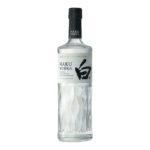 Haku Vodka |
|
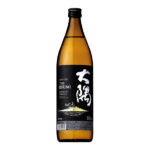 Honkaku Imo Shochu |
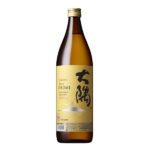 Honkaku Mugi Shochu |
Suntory: Luxury Whisky Brands with Pricing to Match
Suntory makes a variety of everyday products. From their massive beer operations to bottled water, soft drinks, wine, and even health and wellness products. Most of these will be unfamiliar to North American consumers. Suntory whisky is another matter. Their luxury brands Yamazaki, Hakushu, and Hibiki are red hot with huge demand and feeble supply. Countless awards and Bill Murray are, to varying degrees, to blame. Under these conditions of ultra-hype: Suntory whiskies often sell for staggering markups. Good deals can be found if you search hard enough, however. I highly recommend Wine-searcher for retail shopping or to establish a base line of pricing. They promote both local retailers and ones that ship.
Staggering prices won’t be unfamiliar to anyone that’s tried to find a reasonably priced bottle of Yamazaki or Hibiki with an age statement. Suntory’s whiskies have commanded the highest prices on the Japanese whisky market. In 2020, a 55 year old Yamazaki sold for $795K! A 50 year Yamazaki sold for $440K the previous year. Wow– Suntory has come a long way since its Port knock-off Akadama beginnings!
Additional Reading and Links
Suntory Official: English /日本語
Label Translation
Yamazaki Distillery 山崎蒸溜所 Yamazaki 山崎
Hakushu 白州 Hakushu Distillery 白州蒸溜所
Chita 知多 Chita Distillery 知多蒸溜所
Hibiki 響 Toki 季
Suntory サントリー Shinjiro Torii 鳥井信治郎
Single Malt シングルモルト Gin ジン
Osaka 大阪 Aichi 愛知 Yamanashi 山梨
Rikyu no Mizu 離宮の水
Suntory Osaka Factory サントリー大阪工場
Liqueur Atelier リキュール工房 Osumi Shuzo 大隅酒造
Recommended Whisky Products
As an Amazon Associate I earn from qualifying purchases.
Follow the Japanese Bar on Social Media
Connect with our latest posts, the newest Japanese beverage info, and get exclusive promotional offers. Level-up your Japanese whisky IQ!
